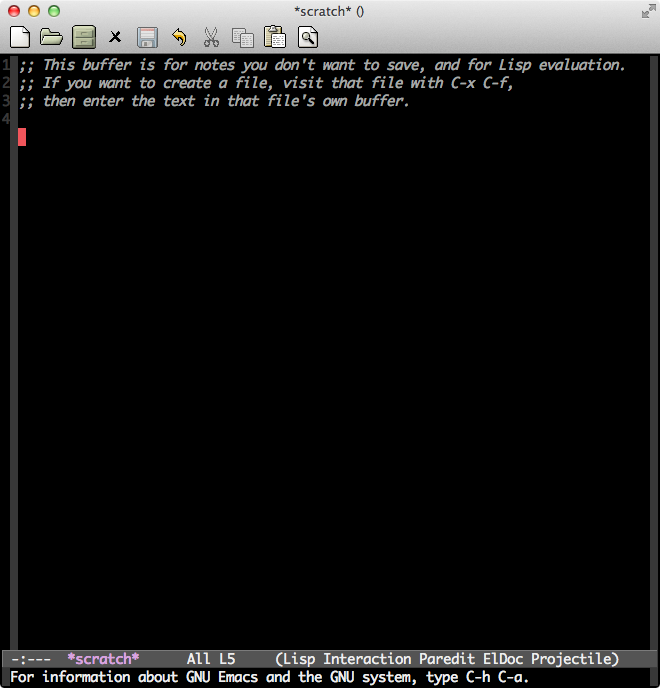

- #Quit emacs how to#
- #Quit emacs update#
- #Quit emacs code#
- #Quit emacs password#
- #Quit emacs windows#
So I figured I want to overwrite the lowercase- q shortcut to a “quit and remove window” action. The usual way to invoke Emacs is with the shell command emacs. I don’t want a source file to become visible in the small bottom pane. But I don’t want this to happen when I compile a project. Help (Note: M-x means to first hit the escape key and then hit x.) C-x C-c.
#Quit emacs how to#
That’s similar to when you close tabs in your browser: the adjacent tab becomes focused. If you start emacs with no file name in the command line, you will get instructions on how to run the tutorial. Next type colon (: symbol) You see the cursor at the lower left corner of the screen. It changes what you see in the window.) You can also pop the stack’s tip from it and have the new tip become active automatically. You can quit the vim or vi text editor without saving any changes you may have made to the file as follows: First, you need to press Esc key to get out of insert or append mode. ( C-x b is the fundamental command you learn early, corresponding to the switch-buffer function. The rest of the stack can still be navigated to by switching buffers if you want. That operation is similar to all other buffer display operations: it puts the compilation buffer on top of the window’s buffer stack, and the topmost item is going to be displayed. Then the newly created window is set to display the compilation results. That’s the default behavior of the split command at least. The bottommost window is displaying the very same buffer (or in-memory contents that are related to the file I’m viewing) as my original window. When I compile a project in emacs, the compilation window is created by splitting my current window in two. C-x C-c Quit Emacs, giving option to save if there are unsaved changes.
#Quit emacs update#
Update (): Turns out I forgot to add the -hook part of special-mode-hook. Dont worry: with Emacs, you can quit in the.

Update: Turns out the compilation window is not reacting to the special-mode-hook, so I had to add a hook for it, too. you get to type in a new path and name in the buffer, like the open command exit/quit, C-x C-c, it will verify any unsaved open files in the minibuffer- so. Stopping Commands and Undoing Changes Sometimes you start a command by accident or change your mind about it. Window Management and Navigation What good is an editor if you can only have a. (The function that’s called is named quit-window.) When the content is closed, the next best content is displayed in its stead. Evil mode emacs is so vi-esque that your old friends :w and :q are available to save and quit as well. For example, command X C (the command to quit the editor) consists of a control-X. One key is q which closes the currently visible contents, but leaves the window pane on screen. Emacs is a text editor with some advantages over other text editors.
#Quit emacs windows#
These non-text “special” windows have dedicated key bindings as well.

That’s one mode where you do not interactively enter text, but can move the caret around freely.
#Quit emacs code#
This kind of window (or panes) is in the so-called special-mode. You can do it, but at the expense of killing the Esc prefix key map The code to do this is (global-set-key '' 'keyboard-escape-quit) where the funny char is is escape (use Q esc to type it in) it will map esc for you but the rest of the keymap is gone after that Share Improve this answer answered at 5:06 jottos 19. But when I have the compilation results pane focused, I want to close and dismiss it quickly. I managed to limit the height of the compilation window to 10 lines already. It'll transparently save the file across the network, so absent a bit longer time it takes to save, you won't even notice it's a remote file.Quit and Close Emacs Special Windows Like Help and Compilation ResultsĮmacs can display interactive help windows (the content/buffer name is called “ *Apropos*”), and compilation results.
#Quit emacs password#
To edit a file on a remote server, run C-x C-f like normal, but instead of finding the file normally, use a special format for the file path: if you want to edit the file located at /etc/hosts on the remote server my-remote-machine, and you need to log in as gragas, find the file this way: C-x C-f will prompt you for a password if one is required. Working with buffers Starting, quitting, and getting help The emacs display Working with files Cursor motion Inserting and deleting text Cutting and. So send a C-c to your terminal to enter normal mode. Note that C-c enters normal mode in Vim, but is usually not captured by Evil. Im not familiar with multi-term but I hope this helps. In term more I think it was ctrl-c ctrl-z.

This functionality is called TRAMP, an acronym for "Transparent Remote (file) Access, Multiple Protocol". Ctrl-z should change to emacs mode, or at least it is the shortcut in most other modes. Alternatives to recursive EmacsĮmacs is able to edit files on remote servers, so you don't even need to ssh into the remote server, and you won't need an Emacs inside a term inside your original Emacs. Quitting Emacs without C-x C-cįirst, you can quit emacs by running the command that C-x C-c is bound to: M-x save-buffers-kill-terminal.


 0 kommentar(er)
0 kommentar(er)
